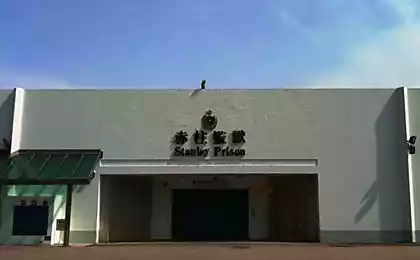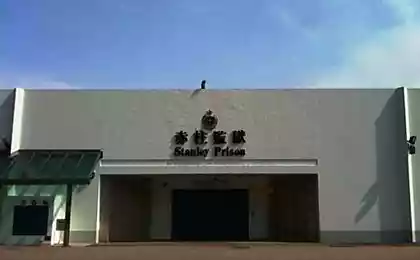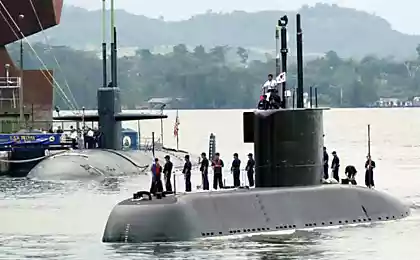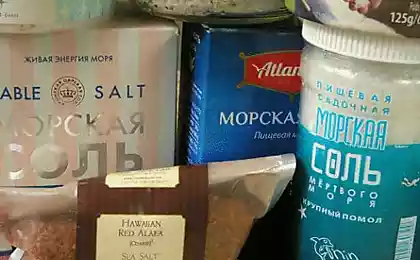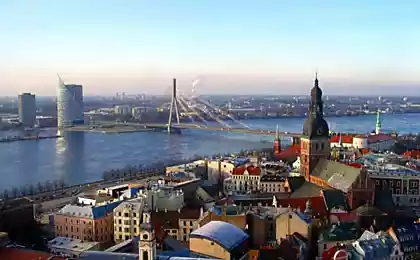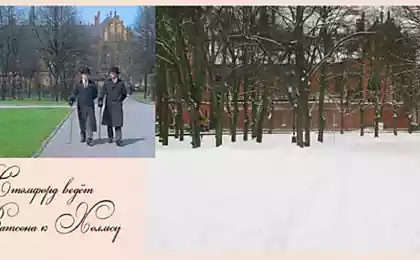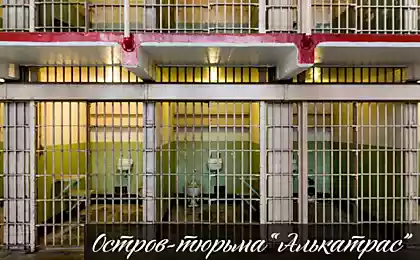2019
The naval base of the USSR in Liepaja
This building was built in the early twentieth century and the beginning served as a hospital. Later, it was converted for prison purposes, as in the Soviet period it housed the guardroom of the Baltic Fleet of the USSR. The two-story red brick building, the entrance to the complex developments of the former naval hospital, which was built in the late 19th century. The building started Emperor Alexander 3, issued a decree in 1890, but only really began to build in 1893. And in 1894, a military port in the city was also the name of Czar Alexander 3.

The building of the former "lips" located on the street 4 Disabled (Invalidu iela) and the navigator correctly cited our "ushatanny" Saabchik to the object.
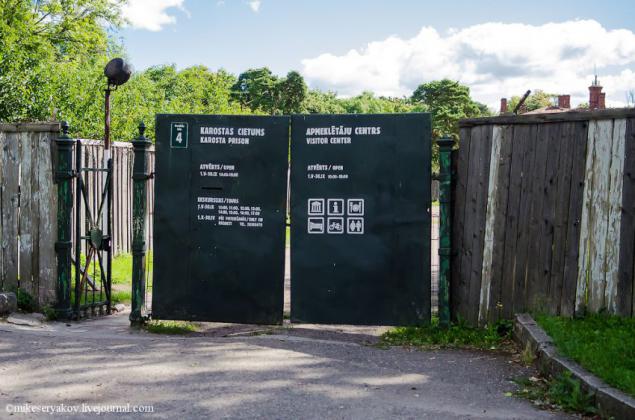
Now it is a museum, which is visited by many tourists from around the world. When I arrived, there were already 40 people waiting "in the wings." Tours are conducted by specially trained tour guides, wearing what is called the "shape." You can even take a picture with them on the background of "growthmetr».
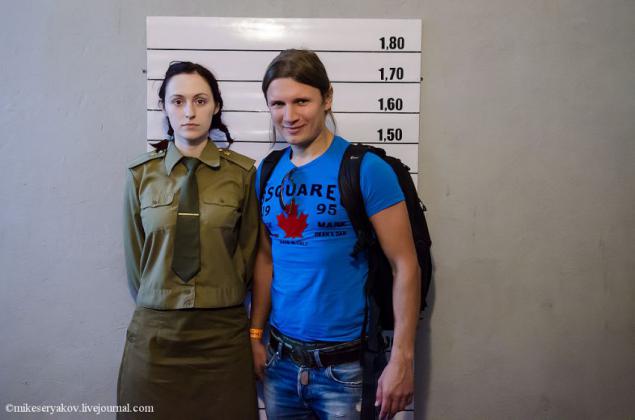
Ticket cashiers also dressed "correctly" and "in accordance with the Charter»
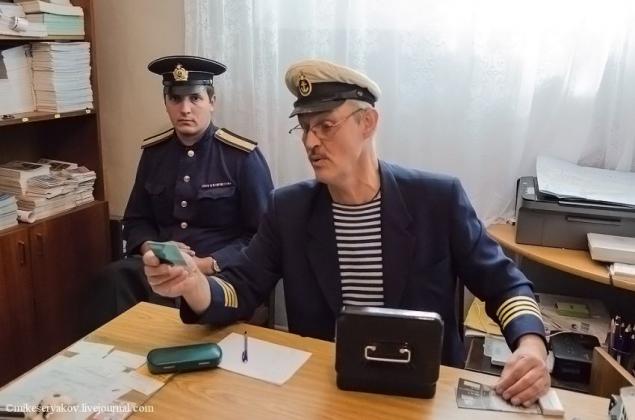
You can not walk anywhere, but only by "specially-equipped routes.

The former prison - now a museum, and therefore with the "comfort" is all right, is not what it used to. For tourists there are special toilets in the "corporate" style.
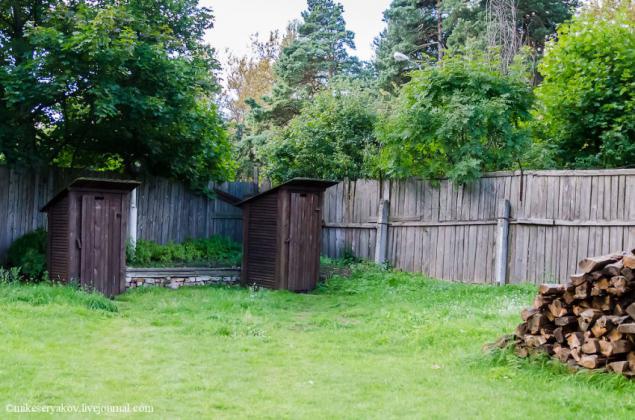
Comfort level, especially for women))
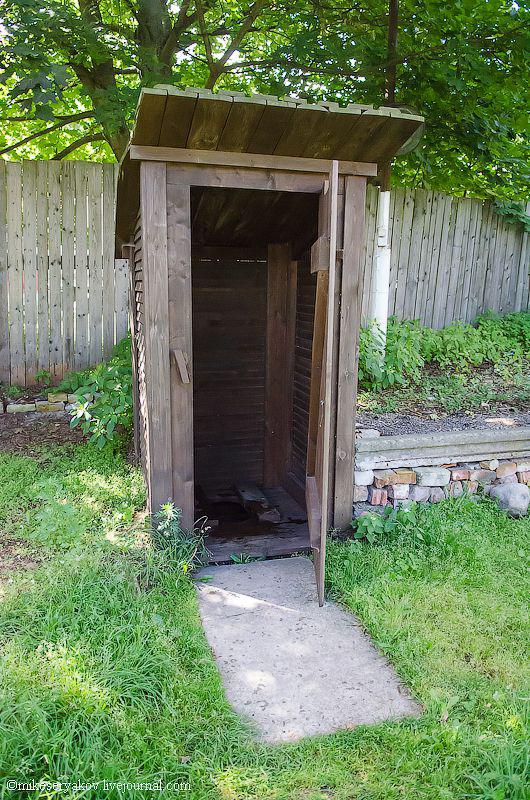
Entourage War Museum.
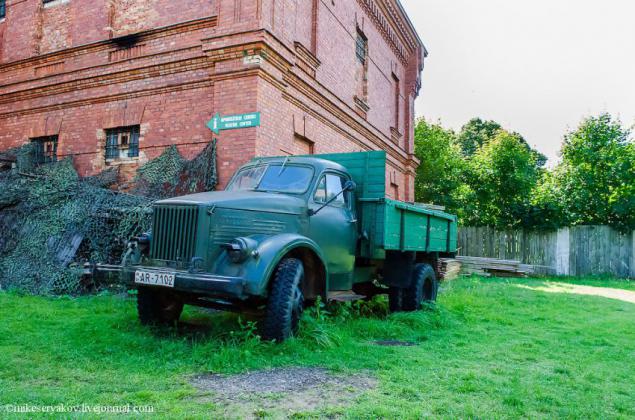
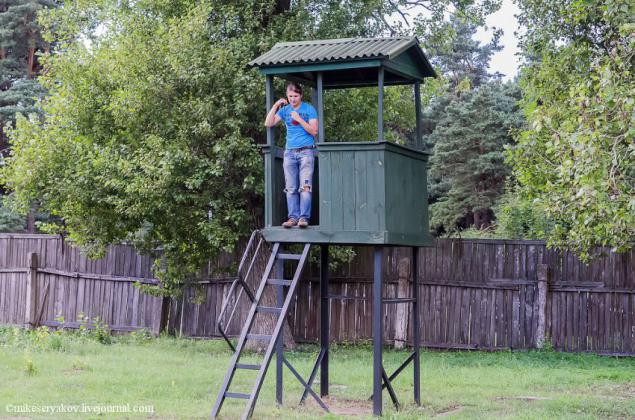
Before the start of the tour our wonderful guide foreman Einars all built into a column in order of size, because in the army should be let ugly, but the most important thing to a uniform.

From the fact that gauptvahata Karosta is a former military hospital Cross says under the roof of the old building. This red brick more than 100 years. The two-storey building of 69 rooms, 39 of which is a chamber for prisoners.

The main entrance to the building, "museum." Initially it was a hospital, but in 1905, during the rebellion of sailors, here for the first time in the cells contain the rebels began. Thus from 1905 to 1997, the building was used as a guardhouse and power changes, and "lip" and remained "lip».
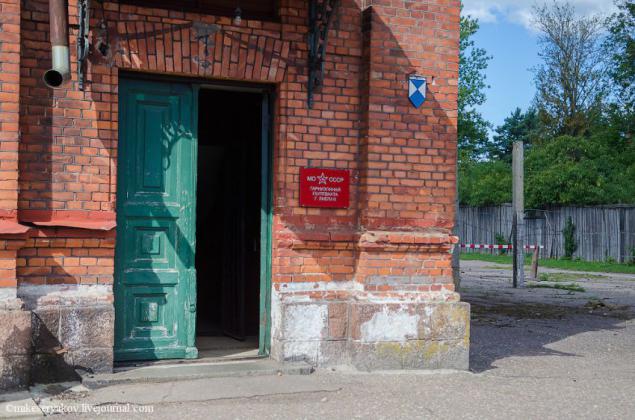
Guardhouse first used the Russian Empire until 1915, then from 1915 to 1917 the Kaiser's Germany, then until 1939 - independent Latvia from 1939 to 1941 - "Tips" in the Second World War - the Third Reich, after already "Soveysky Union" until 1991, well, and finally 91 to 97 years of the twentieth century - the newly independent Latvia. After 1997 a guardhouse ceased to exist, and that's only recently became a museum.
This fall guards and sailors. But the soul of this building is not and never has been.
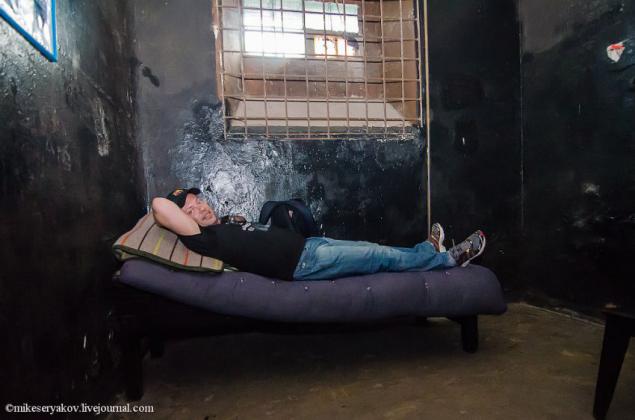
That such small cameras happened containing an average of from one to four people, but different "holidays" when the sailors' Gulbanu ", the number of detainees in the same cell, and came up to fifteen. During the tour, Sergeant constantly joking and offered to play a game a la "O Lucky Man." The question was simple, that the most difficult thing in this chamber. My friend was not taken aback and immediately retorted: "Imperceptibly fart." Sergeant guide Einars almost hesitated at first, but then agreed with the rightness of my friend Vladislav.)
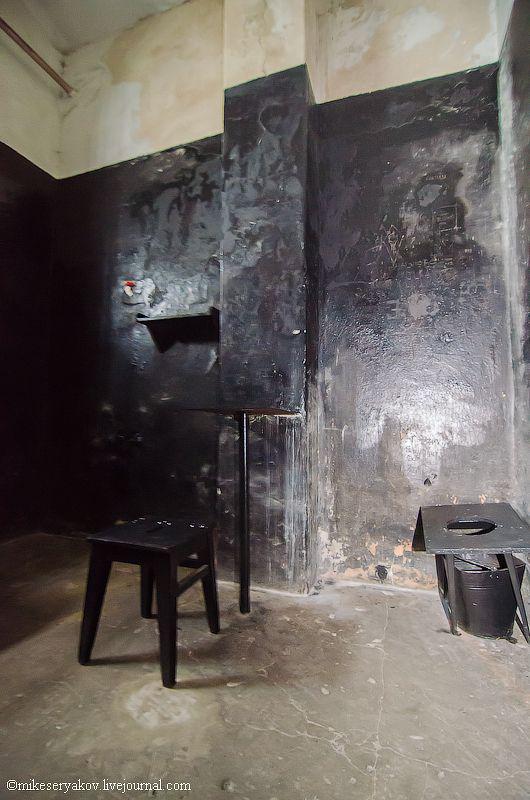
Dark corridors of the former "lips." Going to the toilet at the "lip" was also voluntary, rather than something that "I want to go, do not want to go." The building was a shared toilet for all cameras on the floor. On 20 cameras allotted 30 minutes. If someone suddenly "zasiditsya" something else has alas, not enough time, and "overstayers" "re-educated". But it was impossible to "re-educate" the face. Toilet "disgraced" by the Charter sailors put twice daily at 6.00 and 21.30.
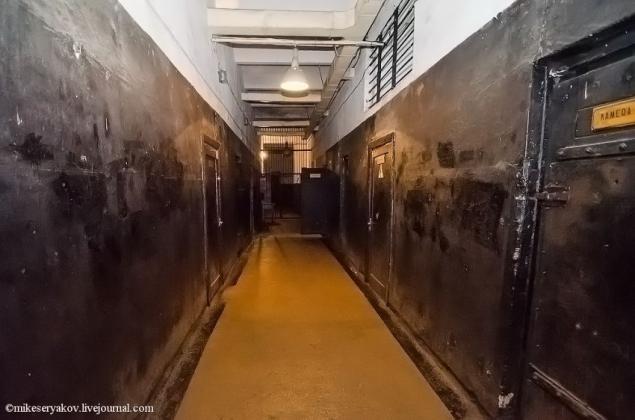
On average, soldiers and sailors are kept for 5-10 days, but who are "different" good behavior could be here, and as many as 30 more could not hold, as the Charter relies wash, but as I wrote above a shower in the building are not provided It was.
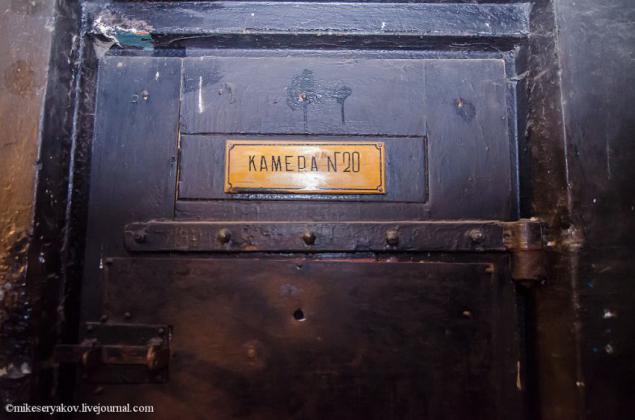
I am guilty that could not keep the leg stretched forward for five minutes and the foreman sent me to the "ten minutes" into the camera. Entries on the walls of the original and made by former prisoners of Karosta.
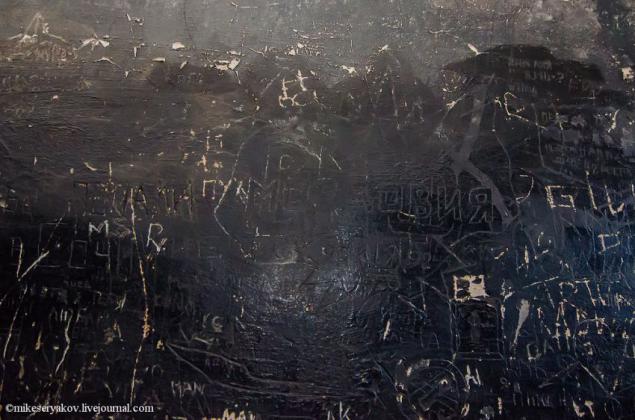

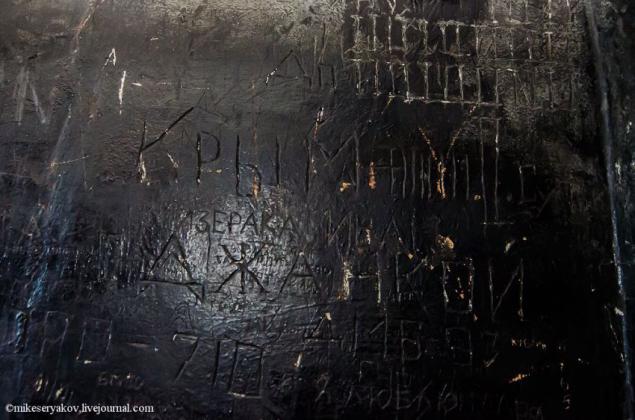
Each "correctional" institution necessarily should have been, "Lenin room". Here, the "stumbling" might in a calm atmosphere and quiet read fables "old syphilitic».
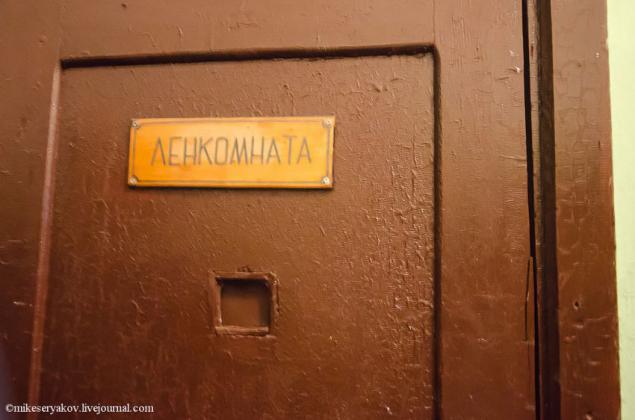
Here in the museum there is a small exhibition of objects of World War II.
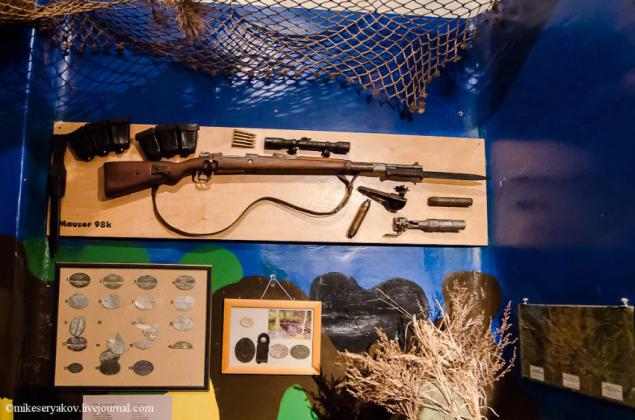
German soldiers from the unit "SS».
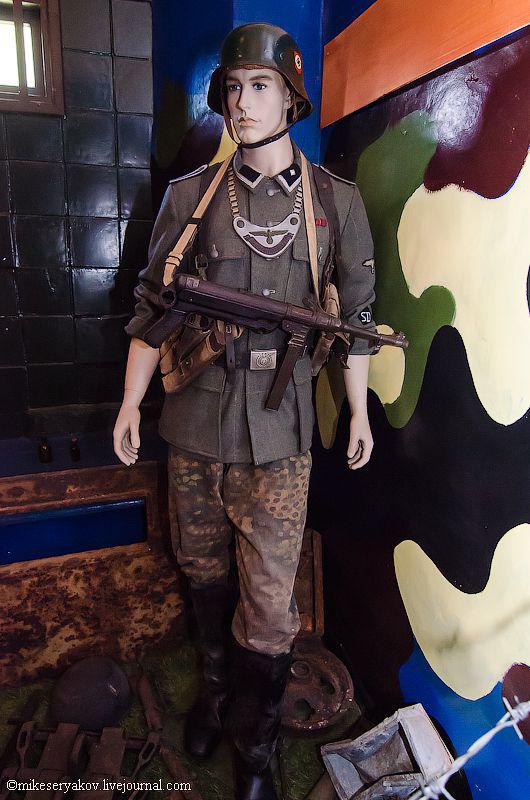
All German soldiers wore a belt with a buckle on which was written the standard phrase «Gott mit uns" (God with us), with the exception of "SS" on their buckles was a different slogan «Meine Ehre heisst Treue" (My honor is called loyalty) - this is the motto, which modern Germany is under strict taboo.
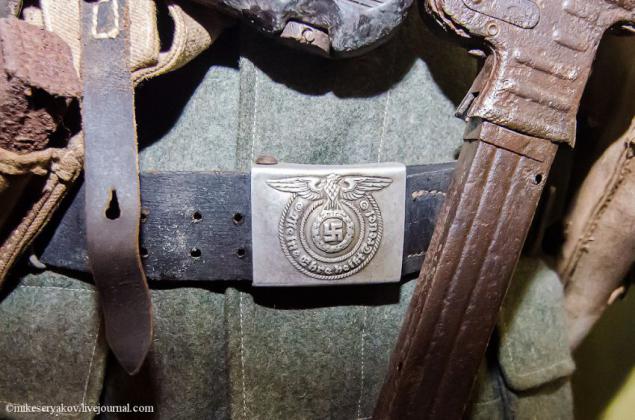

Various items of war. Each of them is likely to have its tragic history. Who knows what is remembered and seen these things, how many deaths and ruined destinies ...
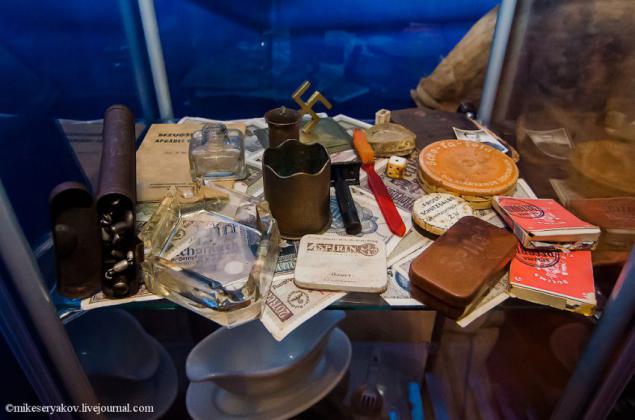
To the amusement of tourists museum - a guardhouse and offers comfortable rooms with no amenities. Visitors can stay here for the night here in this quiet cozy atmosphere. I'd love to stay, if it possessed a great time. Sergeant Einars even said that "draw" for me "wi-fi».
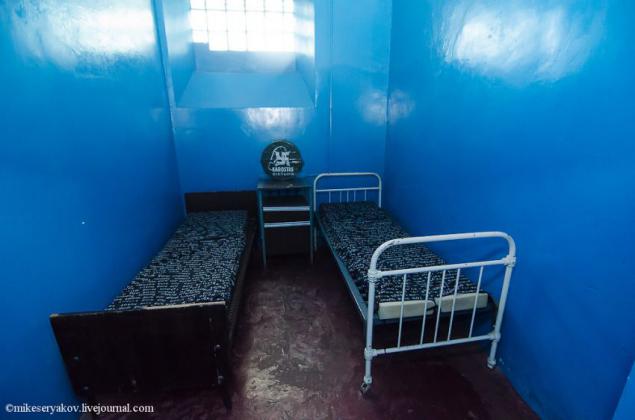
And so we, along with the foreman watching television, a football match, "CSKA Moscow - Spartak." When I was a military training camp my favorite Ensign Abdrashitov like to talk about TVs. When I asked him for permission to watch TV, he always allowed, only asked not to include.
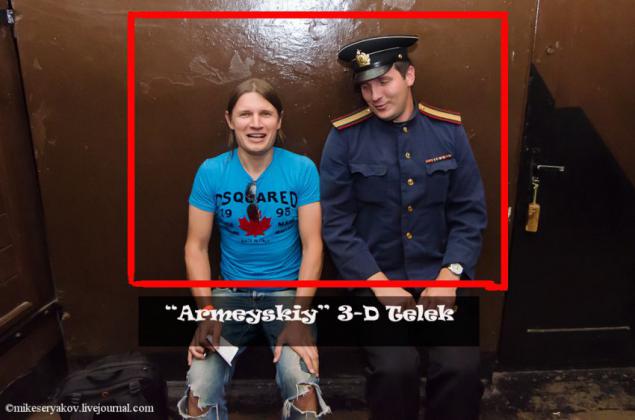
Once these phones were very common in the Soviet Union, I wonder how many of them were released.
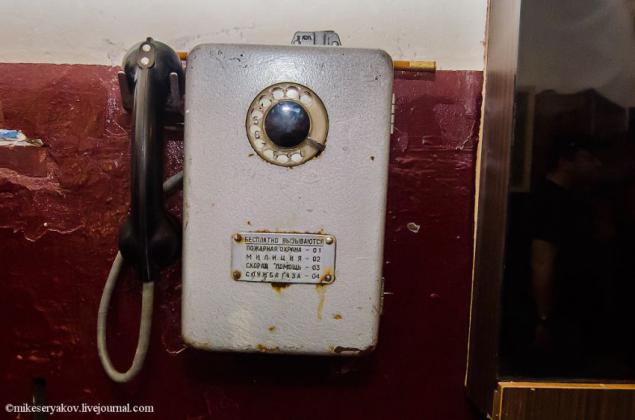
Cash registers "era Soveyskogo Union & quot ;.

Watch "Amber" were also very common in the Soviet Union.
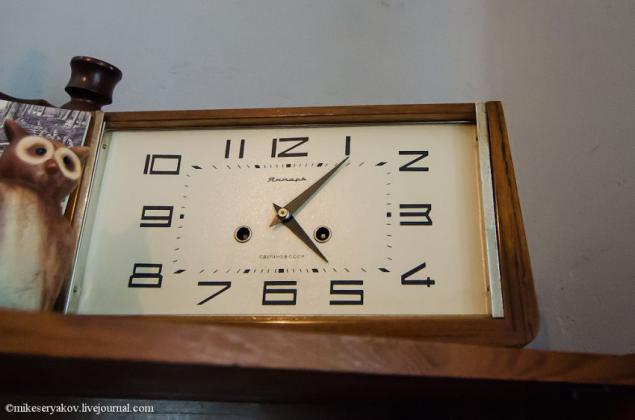
Hercules - Giant Andrews also works in the museum guide, but concurrently he is also one of the most famous kite surfers Latvia. He in Liepaja own kite school.
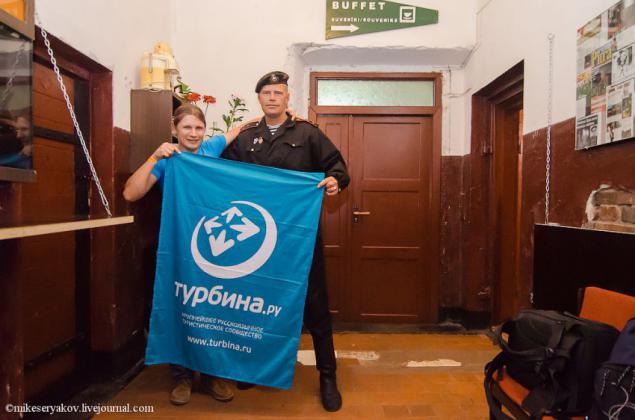
The actual writing of Soviet times, where everything has always been "severely».
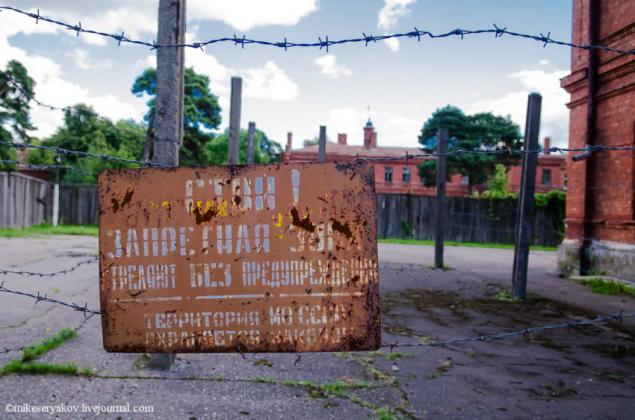
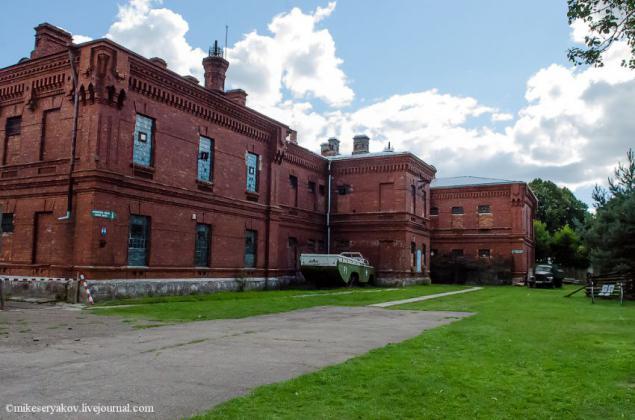
At the end of the tour to the delight of tourists opened the "post-Soviet" cafe. "Born in the USSR" have more to remember these products.
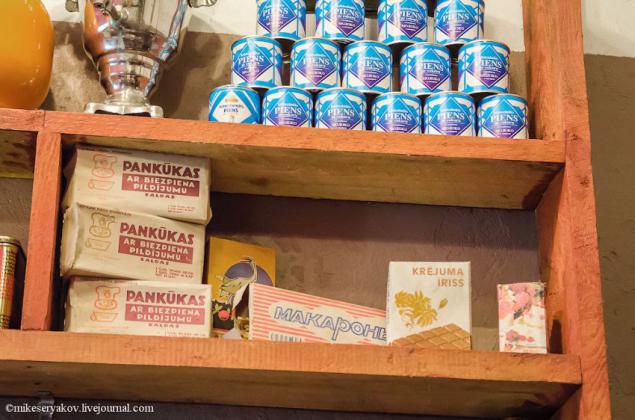
And then on the wall "ubiquitous" Grandpa Lenin. As soon as I saw it I remembered a poem ...
- Why did you commit a crime, slandered our Leninist system!
- To shit like I'm on your Lenin answered them young hero!
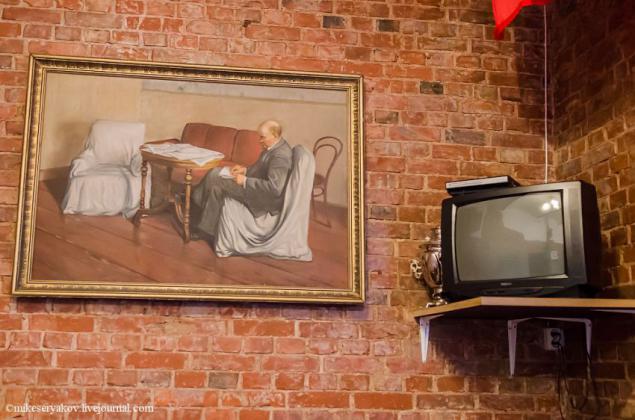
Particularly cruel to pass for the guardhouse during the Second World War. The Germans said that this building can be accessed only in three ways: in the penal battalion, the concentration camps, well, here, or also for garages, where the "supreme court" comes instantly. In the last years of the war from June 1944 to May 1945 he worked here for a German military court-martial, consisting of three officers. Death sentences could be obtained for spying for the Red Army, well, for example, or for listening to radio stations in Moscow, or "Bi-Bi-Si».
The bodies of the executed were buried over the dune across the street Disabled, or for "garages", as it looks now. Now here a memorial in memory of the victims. In this mass grave lies about 90 victims.
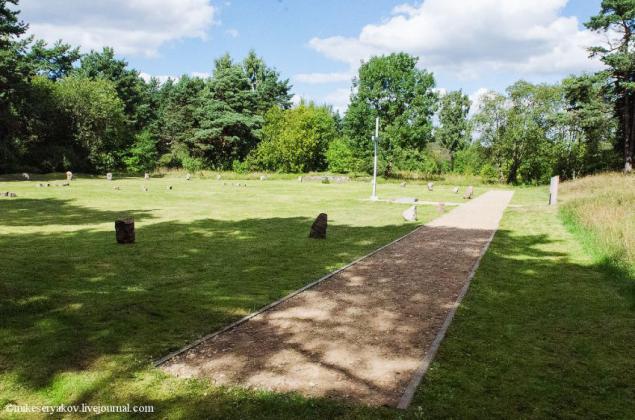
Were shot here "just" - shot in the head.
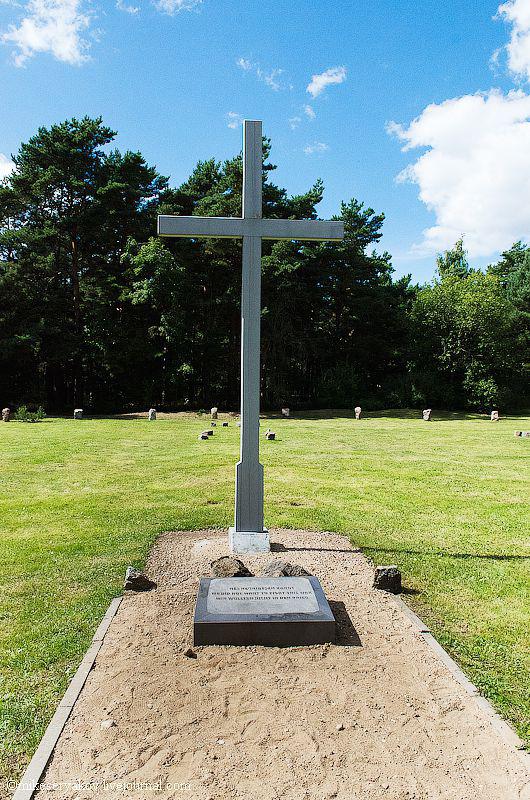
Interesting stone with inscriptions in Latvian, English and German. And the inscription in German and English is not entirely consistent with each other. "We did not want to fight in this war" - is written in English, "We did not want during the war" - is written in German, the verb somewhere lost)).
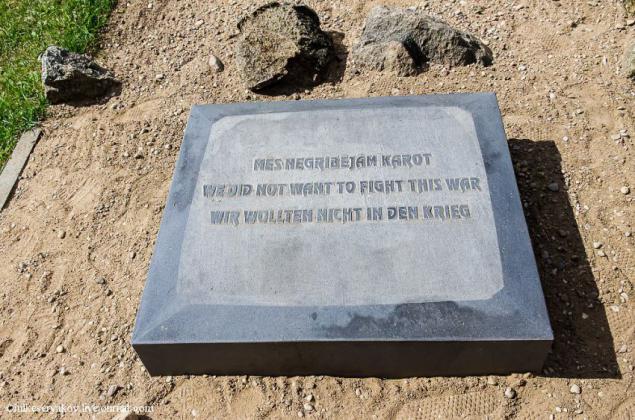

Here's a nice little forest is right next to this terrible building, although now it does not look very scary. Our black Saabchik against a red brick building. For some reason I remembered it is now history, which I have in the distant 2001 told the sister of my friend, her ex-boyfriend with whom they parted, he loved to tell her the following sentence: "And you could not wear a dress the color of my Saab", 12 years old passed, and this phrase has remained in my memory))) ... and I went on to inspect the wonderful city of Liepaja.
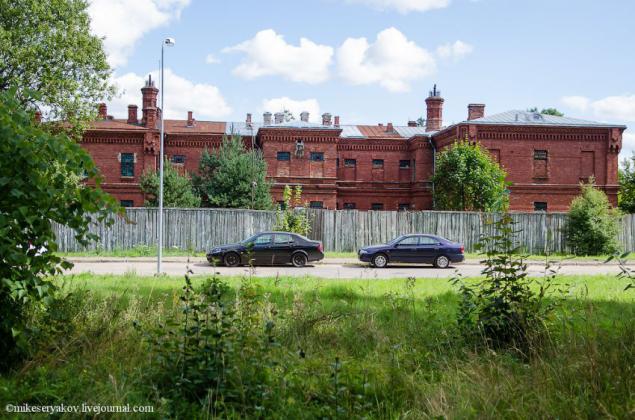
Source: mikeseryakov.livejournal.com

The building of the former "lips" located on the street 4 Disabled (Invalidu iela) and the navigator correctly cited our "ushatanny" Saabchik to the object.

Now it is a museum, which is visited by many tourists from around the world. When I arrived, there were already 40 people waiting "in the wings." Tours are conducted by specially trained tour guides, wearing what is called the "shape." You can even take a picture with them on the background of "growthmetr».

Ticket cashiers also dressed "correctly" and "in accordance with the Charter»

You can not walk anywhere, but only by "specially-equipped routes.

The former prison - now a museum, and therefore with the "comfort" is all right, is not what it used to. For tourists there are special toilets in the "corporate" style.

Comfort level, especially for women))

Entourage War Museum.


Before the start of the tour our wonderful guide foreman Einars all built into a column in order of size, because in the army should be let ugly, but the most important thing to a uniform.

From the fact that gauptvahata Karosta is a former military hospital Cross says under the roof of the old building. This red brick more than 100 years. The two-storey building of 69 rooms, 39 of which is a chamber for prisoners.

The main entrance to the building, "museum." Initially it was a hospital, but in 1905, during the rebellion of sailors, here for the first time in the cells contain the rebels began. Thus from 1905 to 1997, the building was used as a guardhouse and power changes, and "lip" and remained "lip».

Guardhouse first used the Russian Empire until 1915, then from 1915 to 1917 the Kaiser's Germany, then until 1939 - independent Latvia from 1939 to 1941 - "Tips" in the Second World War - the Third Reich, after already "Soveysky Union" until 1991, well, and finally 91 to 97 years of the twentieth century - the newly independent Latvia. After 1997 a guardhouse ceased to exist, and that's only recently became a museum.
This fall guards and sailors. But the soul of this building is not and never has been.

That such small cameras happened containing an average of from one to four people, but different "holidays" when the sailors' Gulbanu ", the number of detainees in the same cell, and came up to fifteen. During the tour, Sergeant constantly joking and offered to play a game a la "O Lucky Man." The question was simple, that the most difficult thing in this chamber. My friend was not taken aback and immediately retorted: "Imperceptibly fart." Sergeant guide Einars almost hesitated at first, but then agreed with the rightness of my friend Vladislav.)

Dark corridors of the former "lips." Going to the toilet at the "lip" was also voluntary, rather than something that "I want to go, do not want to go." The building was a shared toilet for all cameras on the floor. On 20 cameras allotted 30 minutes. If someone suddenly "zasiditsya" something else has alas, not enough time, and "overstayers" "re-educated". But it was impossible to "re-educate" the face. Toilet "disgraced" by the Charter sailors put twice daily at 6.00 and 21.30.

On average, soldiers and sailors are kept for 5-10 days, but who are "different" good behavior could be here, and as many as 30 more could not hold, as the Charter relies wash, but as I wrote above a shower in the building are not provided It was.

I am guilty that could not keep the leg stretched forward for five minutes and the foreman sent me to the "ten minutes" into the camera. Entries on the walls of the original and made by former prisoners of Karosta.



Each "correctional" institution necessarily should have been, "Lenin room". Here, the "stumbling" might in a calm atmosphere and quiet read fables "old syphilitic».

Here in the museum there is a small exhibition of objects of World War II.

German soldiers from the unit "SS».

All German soldiers wore a belt with a buckle on which was written the standard phrase «Gott mit uns" (God with us), with the exception of "SS" on their buckles was a different slogan «Meine Ehre heisst Treue" (My honor is called loyalty) - this is the motto, which modern Germany is under strict taboo.


Various items of war. Each of them is likely to have its tragic history. Who knows what is remembered and seen these things, how many deaths and ruined destinies ...

To the amusement of tourists museum - a guardhouse and offers comfortable rooms with no amenities. Visitors can stay here for the night here in this quiet cozy atmosphere. I'd love to stay, if it possessed a great time. Sergeant Einars even said that "draw" for me "wi-fi».

And so we, along with the foreman watching television, a football match, "CSKA Moscow - Spartak." When I was a military training camp my favorite Ensign Abdrashitov like to talk about TVs. When I asked him for permission to watch TV, he always allowed, only asked not to include.

Once these phones were very common in the Soviet Union, I wonder how many of them were released.

Cash registers "era Soveyskogo Union & quot ;.

Watch "Amber" were also very common in the Soviet Union.

Hercules - Giant Andrews also works in the museum guide, but concurrently he is also one of the most famous kite surfers Latvia. He in Liepaja own kite school.

The actual writing of Soviet times, where everything has always been "severely».


At the end of the tour to the delight of tourists opened the "post-Soviet" cafe. "Born in the USSR" have more to remember these products.

And then on the wall "ubiquitous" Grandpa Lenin. As soon as I saw it I remembered a poem ...
- Why did you commit a crime, slandered our Leninist system!
- To shit like I'm on your Lenin answered them young hero!

Particularly cruel to pass for the guardhouse during the Second World War. The Germans said that this building can be accessed only in three ways: in the penal battalion, the concentration camps, well, here, or also for garages, where the "supreme court" comes instantly. In the last years of the war from June 1944 to May 1945 he worked here for a German military court-martial, consisting of three officers. Death sentences could be obtained for spying for the Red Army, well, for example, or for listening to radio stations in Moscow, or "Bi-Bi-Si».
The bodies of the executed were buried over the dune across the street Disabled, or for "garages", as it looks now. Now here a memorial in memory of the victims. In this mass grave lies about 90 victims.

Were shot here "just" - shot in the head.

Interesting stone with inscriptions in Latvian, English and German. And the inscription in German and English is not entirely consistent with each other. "We did not want to fight in this war" - is written in English, "We did not want during the war" - is written in German, the verb somewhere lost)).


Here's a nice little forest is right next to this terrible building, although now it does not look very scary. Our black Saabchik against a red brick building. For some reason I remembered it is now history, which I have in the distant 2001 told the sister of my friend, her ex-boyfriend with whom they parted, he loved to tell her the following sentence: "And you could not wear a dress the color of my Saab", 12 years old passed, and this phrase has remained in my memory))) ... and I went on to inspect the wonderful city of Liepaja.

Source: mikeseryakov.livejournal.com

